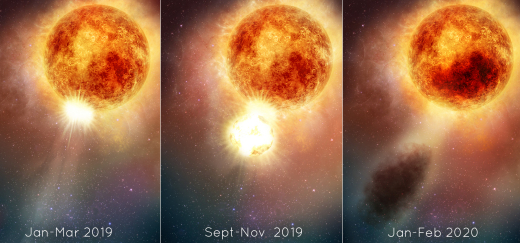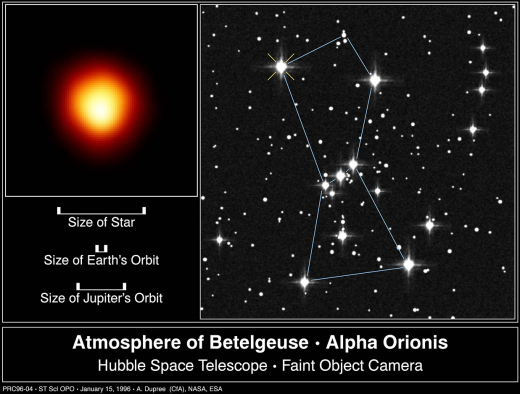
WHAT JUST HAPPENED TO #BETELGEUSE? You've heard of a CME, a "coronal mass ejection." They happen all the time. A piece of the sun's tenuous outer atmosphere (corona) blows off and sometimes hits Earth. Something far more terrible just happened to Betegeuse: an SME, or "surface mass ejection."
Above: An artist's concept of the SME on Betelgeuse. Credit: Elizabeth Wheatley (STScI)
NASA astronomers believe that in 2019 a colossal piece of Betelgeuse's surface blew off the star. The mass of the SME was 400 billion times greater than a CME. Data from multiple telescopes, especially Hubble, suggest that a convective plume more than a million miles across bubbled up from deep inside the star, producing shocks and pulsations that blasted a chunk off the surface.
"We've never before seen such a huge mass ejection from the surface of a star," says Andrea Dupree of the Harvard-Smithsonian Center for Astrophysics, who is leading the study. "Something is going on that we don't completely understand.
After it left the star, the SME cooled, forming a dark cloud that famously dimmed Betelgeuse in 2019 and 2020. Even casual sky watchers could look up and see the change.

Most amazing of all is the change in Betelgeuse's regular 430-day pulsation. Astronomers have long known that Betelgeuse is a variable star; its metronome-like change in brightness has been observed for more than 200 years. Now it's gone; the regular pulsations have stopped. This attests to the ferocity of the blowout.
Betelgeuse is so large that if it replaced the sun at the center of our solar system, its outer surface would extend past Jupiter. Dupree used Hubble to resolve hot spots on the star's surface in 1996. This was the first direct image of a star other than the sun.
What's happening now "is a totally new phenomenon that we can observe directly and resolve surface details with Hubble," says Dupree. "We're watching stellar evolution in real time.
There are no comments yet.